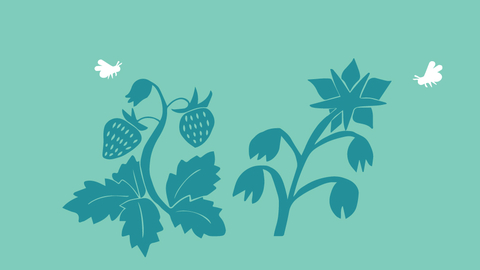
How to do companion planting
Grow plants that help each other! Maximise your garden for you and for wildlife using this planting technique.
Companion planting is all about creating areas of plants that provide benefits to each other. In practice, this means that plants that complement each other are placed together, and those that don’t, are kept apart. By planting 'companion' plants among other plants it can help them to grow by either attracting beneficial insects, and repelling others, or by acting as a sacrificial plant to lure hungry minibeasts away.
Plants complement each other by:
- Reduced competition – put shallow roots beside a plant with deep roots and they will seek nutrients in different levels of the soil, allowing it to support more variety.
- Improving soil – Some plants can improve the soil for others by enriching the nitrogen content.
- Pest repellent – certain plants repel certain types of animals and insects.
Top tips for companion planting:
- Avoid planting all of the same plants together or in rows; insects and slugs find their favourite plant and spread quickly.
- Try 'intercropping': plant fast-growing edible plants between slow-growing ones
- Plant herbs to repel insects
- Use tall plants to create shade for others
- Plant lots of insect and bird-friendly plants throughout your garden
| Companion plant | Place | Result |
|---|---|---|
| Borage | Near strawberries and tomatoes | Attracts bees to cross-pollinate. |
| Chamomile | Near sick plants | May act as a tonic to encourage growth. |
| Comfrey | In flower beds and vegetable plots | Deep taproots bring vital minerals to the surface. |
| Dill and fennel | In vegetable plots | Attract hoverflies that will eat aphids. |
| Garlic and chives | Under roses | Believed to keep aphids and black spot away. |
| Nasturtiums | Among vegetables | Attract aphids away from the vegetables and also may repel ants and whitefly. |



